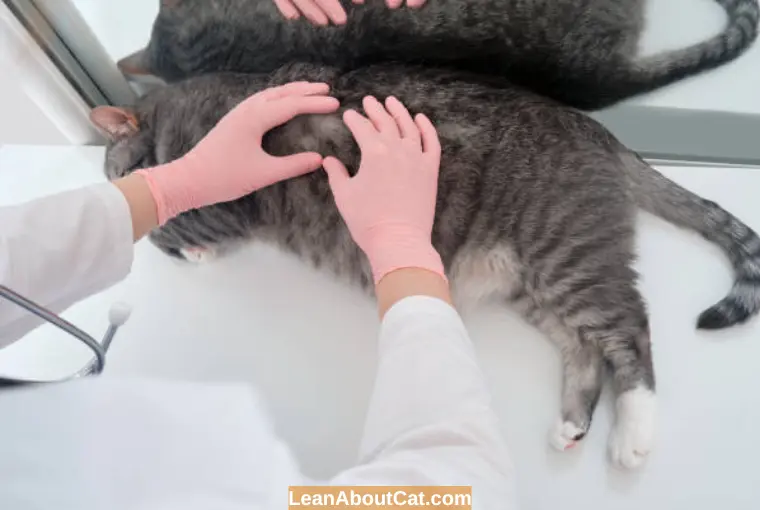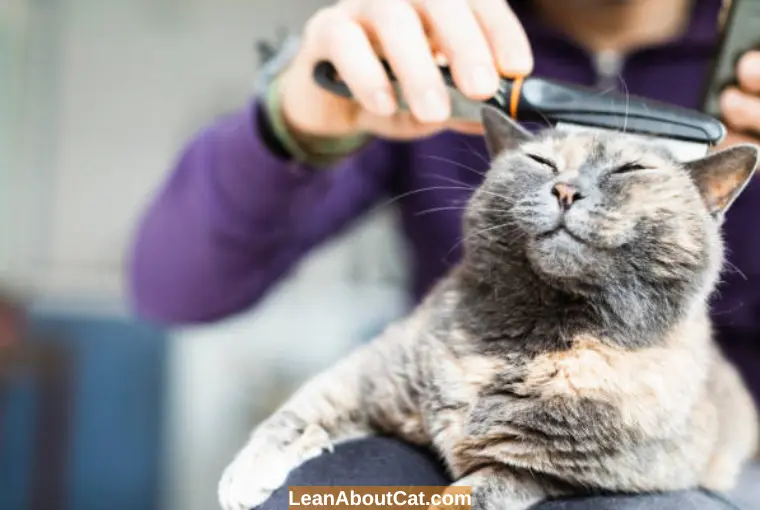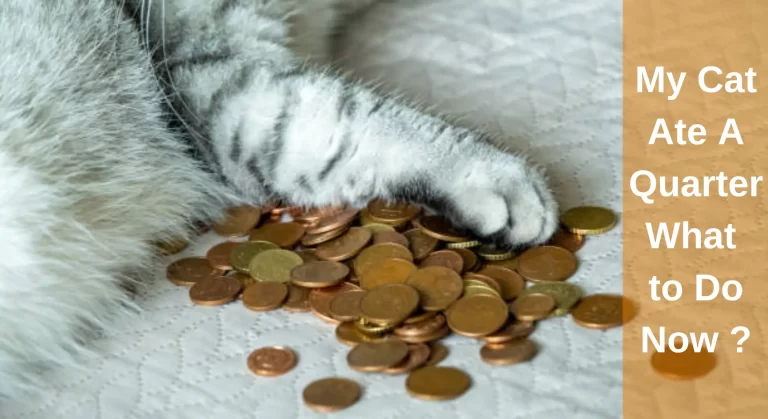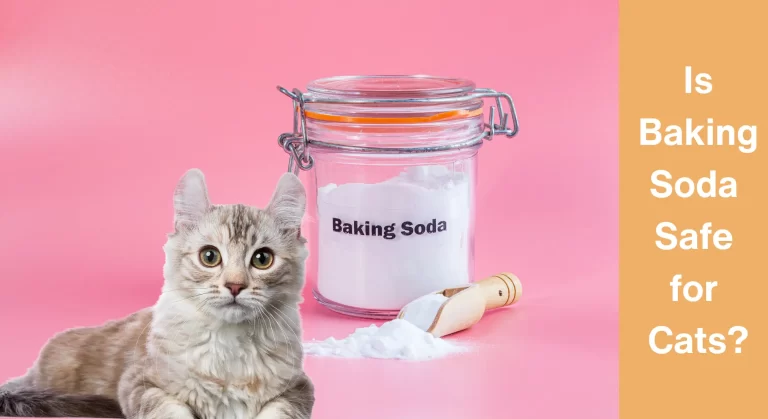Should You Pick Scabs Off Cats? What You Need To Know
Scabs on your cat might develop for a number of reasons, including ringworm, parasitic infection, fungal/bacterial infection, or allergies. In cats that spend all their time indoors, miliary dermatitis is the most common cause. This sickness, typically brought on by an allergic reaction, appears as an agonisingly itchy rash. It is usually a good idea to have your cat inspected by a veterinarian if they notice a new skin problem.
In some cases, itching and discomfort can indicate that a scab is ready to fall off. Sometimes scabs are signs of more profound, more severe skin problems. Therefore, instead of removing them, which could cause more damage, it is better to leave them that way.
Should You Pick Scabs Off Cats? You shouldn’t pick or scratch at scabs on your cat’s head, back or body. This might tear open the wounds and leave lasting scars. Scabs are not the problem; they are only a symptom. It would help if you ascertained the cause so your cat can recover. If sharp, unsheathed claws are used to scratch an itch, the skin may be damaged.
It is important to address the underlying issue. Read on for information about scabs in cats, how they are caused, and remedies you can apply at home to soothe and heal the scab.

Why Do Cats Get Scabs?
A scab’s main function is to protect and cover an open wound. Scabs efficiently isolate the injury from the outside environment and any potential bacteria or germs.
When people think of an open wound, most cat owners assume that cats only get scabs due to severe injuries. Cats can develop scabs for various reasons besides blood-drawing scratches and bites.
The most common reason cats get scabs is feline miliary dermatitis. Your cat will develop dry skin scabs due to excessive scratching, further harming the skin.
Feline Miliary Dermatitis
It can occur in both indoor and outdoor cats, and there are several potential causes, including the following:
- Allergies: are the most typical cause of miliary dermatitis in cats. Pollen, dust, mildew, cat litter, insect bites, and even cat food can cause allergic reactions in cats. It’s possible for scabs to form, which might irritate the skin.
- Fleas: Your cat’s skin becomes more irritating as these tiny bugs bite and suck on its blood. Scratching at flea bites can cause skin damage and cause your cat’s skin to scab.
- Skin infection: Both bacterial and fungal infections can cause miliary dermatitis and scabs in cats—for example, fungus, ringworm or pyoderma.
- Mites: A mite is a different parasite that may live in your cat’s ears and consume its ear wax. Manage, brought on by mites that infest the entire body, causes dehydrated and itchy skin; when your cat starts clawing at things, scabs form.
- Ticks: Ticks are arachnids that adhere to a cat’s skin. Following that, the tick will begin consuming the cat’s blood. The tick’s body will enlarge and turn black as it consumes food. Although ticks don’t itch, they can transfer disease. A tick could have ingested wild animal blood and acquired a sickness.
- Dried skin: If a cat’s skin is dry, its flesh will become increasingly brittle and rough. Your cat is more likely to scratch an open wound if it has dry skin, which will cause scabs.
- Poor Nutrition or Dehydration: Cats’ dry skin is frequently caused by dry air, an imbalanced diet, and a lack of certain nutrients. Indoor cats often have dry skin throughout the winter.
Should I Picked My Cats Scab?
The answer, in this case, is obvious: No! No matter how strong the need is, try to resist the urge to pick at the scabs on your cat since doing so is more harmful than helpful.

Scabs are essential for the skin’s ability to recover. They protect an open wound from the outside by acting as a natural bandage. This helps to stop dirt and germs from entering the damage and infecting the scrape or cut.
This is happening as the skin behind the scab starts to heal. The cells will begin to reassemble as the wound heals.
Picking a scab off at an early stage will eradicate it. You run the danger of reopening the wound if you rip off the top layer of skin since it won’t have had time to heal correctly. For several factors, including:
- The wound stands the danger of contracting an infection if it is further exposed to dirt and bacteria.
- Delaying the healing process.
Repeated skin trauma may interfere with the healing process, increasing the probability of scarring. Your cat will experience a vicious cycle of itching, scab formation, scab removal, and further scab growth.
How To Stop My Cat Scratching Scabs?
To hasten healing and reduce scratching so they don’t scratch and peel off their scabs, your cat will need a little help from you. You should do five things if you notice that your cat has dry skin and scabs and won’t stop scratching. They’ll quicken scab eradication and skin healing.

1. Eliminate Allergens
They are, after all, the primary causes of miliary dermatitis and crusty scabs in cats. Therefore, erasing allergy symptoms will help to alleviate itching, scratching, and to scab.
Removing the chemical from your home that is causing the allergic response is the simplest method to do this. Identifying an allergy may be difficult; it’s a classic case of easier said than done. If you just introduced a new brand of cat food or litter, try switching back to it and see if it helps.
2. Check for Parasites
Although fleas can live everywhere on your cat, they frequently congregate around the neck or the base of the tail. These creatures’ bites on your cat will cause itchy cat scabs, a common occurrence. With a flea comb, comb their coats, giving specific attention to the typical flea-infested areas around their necks and the base of their tails.
3. Use Topical Cream
Over-the-counter topical steroid creams help to relieve skin irritability and scabs. After using this treatment, your cat should cease scratching the scabs and dry skin on its body, allowing the condition of its skin to recover quickly.
These topical treatments are easy to utilise because you may do them at home. Depending on the cause of the scabbing, they can recommend an alternate type of sedative, an antibiotic, or an antifungal medication.
4. Place a Bandage
If your cat continues to rip off hair and form scabs despite my previous advice, you might need to bandage the affected region. The topical drug used to treat cats’ irritated skin might become ingested if they over-groom their scabs. If they eat a small amount, it’s not harmful, but if they eat a lot, issues might develop.
5. Consider Elizabethan Collars (E-Cone)
Having your cat on the dreaded cone could be necessary if everything else fails.
These cones, sometimes known as Elizabethan collars, go around your cat’s neck and deter biting at the raw, scabby wound. A cone prevents your cat from picking at cat sores on its face or neck and prevents it from scratching. However, the effect of the scabs is lessened if they are in a location where your cat can easily access and scratch with its claws.
6. Try Elimination Diets
If your pet’s cat scabs continue to appear after you’ve treated your pet for fleas and mites, a food or environment allergy may have formed. Try removing the new items if you’ve recently changed your family’s diet or added anything new to the home.
You might need to progressively eliminate objects from your cat’s surroundings for a few weeks until you start to notice progress. Once you’ve figured out what caused your cat’s reaction, you need to stop it from happening again in its environment.
Natural Home Remedies to Treat Scabs on Cats
While there are many things you may do to relieve your cat’s misery temporarily, the long-term solution will rely on what caused the cat’s scabs in the first place. To pluck or scrape them off would be harmful. Scabs help the skin recover and keep germs from getting into wounds. Like any other lesion, scabs on your cat should be treated carefully and naturally.

1. Epsom Salt
An Epsom salt bath is a cheap and natural way to cure itchy skin if you can get your cat to take a bath. Warm water and Epsom salts both assist in relieving swelling, and you may also use this time to clean the region.
2. Oatmeal
An oatmeal bath is a very gentle treatment for any itching your poor cat’s crabbiness could cause. The crust and filth will also be easier to remove with the help of warm bath water.
By finely cutting the dry ingredient and combining it with warm water, oatmeal may be transformed into an opulent spa treatment for your cat. You don’t need to rinse oatmeal since it’s completely safe, even if your cat later licks part of it off. There is colloidal oatmeal in this mixture.
3. Coconut Oil
Coconut oil is a crucial component of human and animal diets because of its unique medium-chain fatty acids, antibacterial, antifungal, and antiviral properties, and high nutritional value. Although coconut oil is well known for its many health benefits when ingested, it also has fantastic skin-care properties.
4. A Warm Towel Wrapping
Sometimes the simplest solution is the best. Your cat won’t feel itchy anymore, and a warm towel wrap can help the scabs heal. And if there is less itching, your cat is far less likely to break apart those mending scabs and scratch themselves raw. Take a clean towel and dunk it in warm water; it shouldn’t be hot or chilly. It should be wet but not leaking.
5. Calendula
You can spritz scabs with calendula solution to keep them clean and, to some extent, soften them. If your cat would let it, you could also wet a cloth and make a moist compress.
You can spritz scabs with calendula solution to keep them clean and, to some extent, soften them. If your cat would let it, you could also wet a cloth and make a moist compress.
A cup of water should be steeped with 30 g of calendula flowers for ten minutes, and then the concoction should be allowed to cool. Apply some of the brews to your cat’s wounds with a damp cloth, holding it there until it is warm but not hot. Moisture and warmth will be beneficial for thawing out complex issues.
6. Aloé Vera
Although aloe is best famous for its capacity to treat summer burns, it also has a variety of other applications. However, in this situation, the one that might lessen skin irritation and pain is the one that most interests us. The sticky, gel-like inside of aloe vera leaves has anti-inflammatory, antibacterial, antioxidant, and pain-relieving properties.
Cut a piece of the aloe plant off to obtain the gel and slice it open. You may also buy it, but make sure it’s made entirely of aloe without any colouring or preservatives.
Also, Check Out: Can Cats Eat Aloe Plants? How To Keep Cats Away From It?
It’s important to use aloe vera with caution on cats. They won’t be hurt if you give them a little to eat, but frequent or excessive intake should be avoided.
Frequently Asked Questions
Can cats lick off scabs?
It is never good to let your cat lick at a wound. They might cause it to become infected. Despite the fact that cats might be able to get away with licking minor wounds, licking more serious wounds would cause the wound to become infected, which would, in turn, cause your cat to experience more unnecessary pain and suffering.
Will the scabs on my cat go away?
When the cat scabs do not disappear after fleas and mites are treated, they may have developed a food allergy or environmental allergy. Consider removing any new items or food you added to your cat’s diet if you recently changed their diet.
Is vaseline safe for cat scabs? Can I put vaseline on my cat’s scab?
Vaseline and Aquaphor are safe for pets. Be gentle when treating the wound, as the skin surrounding it is often sensitive and easily damaged. After the wound has been cleaned, Vaseline can be applied to help catch any stray hairs and gently removed afterwards.
How long do scabs take to heal on cats?
The skin beneath the scab is healing. The wound is closed as the cells begin to reunite, and the scab falls off naturally. The skin underneath will be healthy and new. Approximately 1-2 weeks will pass before the scab falls off, depending on the severity of the wound.
Related Posts:
- Why My Cat Has Scabs on Its Neck But No Fleas?
- Dirty Cat Ears vs Ear Mites: How to Know the Difference?
- Cat Keeps Shaking Head But Has No Mites: Why And What to Do?
- Should I let My Cat Lick Its Wound?
- Best Flea Treatment for Kittens Under 12 Weeks
- How To Get Rid of Skin Tags on Cats?
The Bottom Line on Should You Pick Scabs Off Cats
Scabs are required to cover an open wound, promote healing, and prevent infection in your cat. Picking them off might reopen the area and increase the disease risk, leading to scarring.
Cats usually remove their scabs by over-grooming and scratching, which is a sad fact. You should be able to hasten the healing of your cat’s scabs and dry skin by heeding the five suggestions mentioned above. Soon they’ll be happy, scratch-free, and scab-free again.
Who is Isabella?
My name is Isabella, and I am a dedicated and knowledgeable cat enthusiast. With years of experience caring for cats and a deep love for felines, I made a mission to help other cat lovers navigate the challenges of cat ownership.






